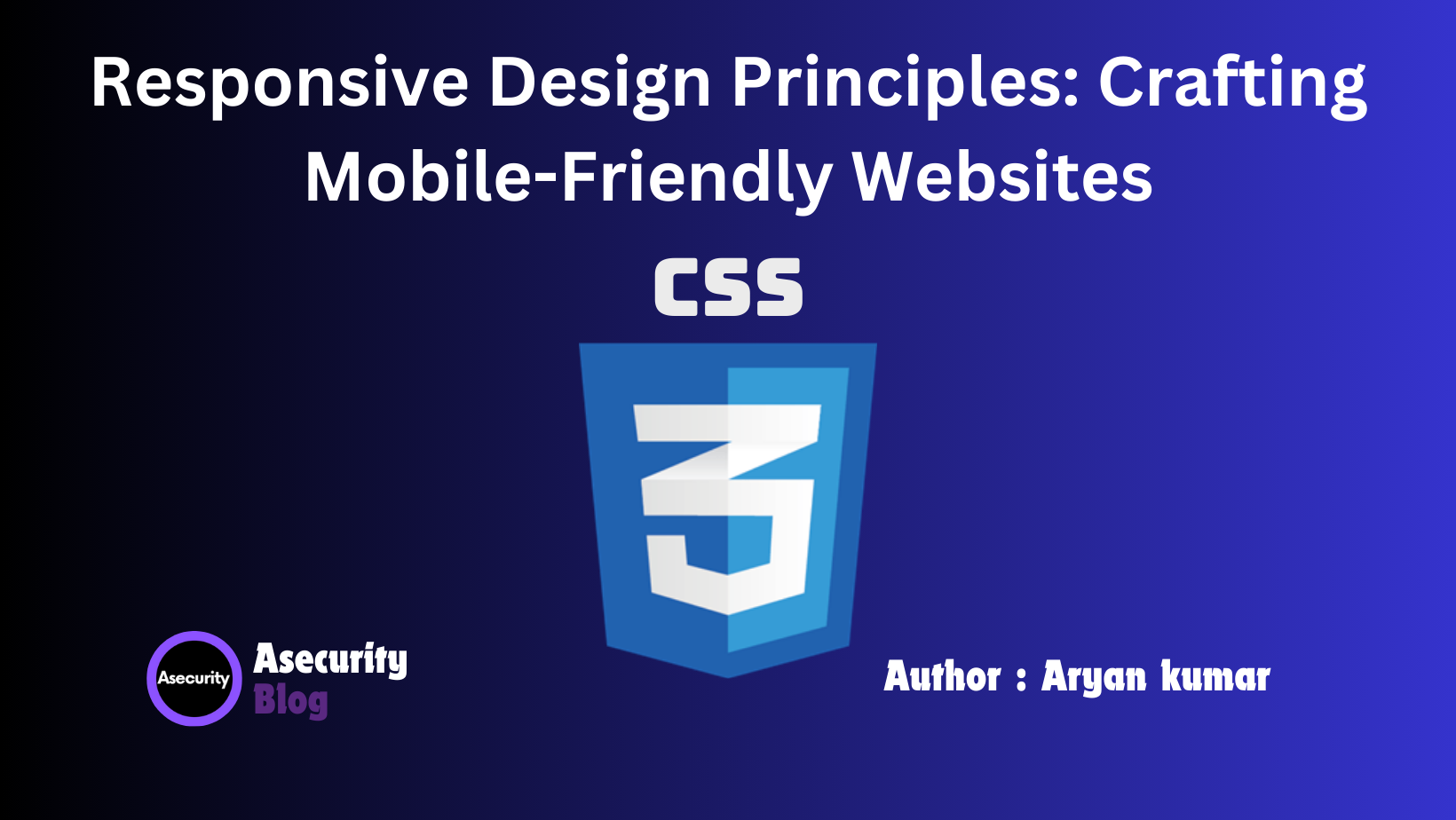Responsive Design Principles: Crafting Mobile-Friendly Websites

In today's digital landscape, creating websites that are accessible and visually appealing across all devices is crucial. Responsive design ensures that your website provides an optimal user experience on a variety of devices, from large desktop monitors to small smartphones. This blog will cover the fundamental principles of responsive design and practical techniques to implement them in your web development projects.
What is Responsive Design?
Responsive design is a web design approach that makes web pages render well on various devices and window or screen sizes. By using fluid grids, flexible images, and CSS media queries, responsive design adapts the layout to the viewing environment, ensuring a seamless experience for all users.
Core Principles of Responsive Design
To create a responsive website, several key principles should be followed:
- Fluid Grids: Instead of using fixed-width layouts, responsive design uses fluid grids, where elements are sized in relative units like percentages rather than absolute units like pixels. This allows the layout to adapt to different screen sizes naturally.
- Flexible Images: Images and other media should be scalable, using CSS to ensure they resize within their containing elements. This prevents images from overflowing their containers on smaller screens or appearing pixelated on larger ones.
- Media Queries: Media queries are a cornerstone of responsive design. They allow you to apply different styles based on the device's screen size, orientation, resolution, and other characteristics. By defining breakpoints, you can create a more tailored experience for users on different devices.
- Mobile-First Approach: Designing for mobile first means starting with a design that looks good on small screens and then gradually adding more content and style as the screen size increases. This approach ensures that the most critical elements are always accessible and that the website loads quickly on mobile devices.
Implementing Responsive Design with CSS
Now, let's dive into the practical implementation of responsive design using CSS. We'll look at how to set up a fluid grid, make images flexible, and use media queries effectively.
1. Setting Up a Fluid Grid:
Fluid grids are the backbone of responsive layouts. Here's a simple example of a fluid grid using CSS Flexbox:
<div class="container">
<div class="column">Column 1</div>
<div class="column">Column 2</div>
<div class="column">Column 3</div>
</div>
CSS:
.container {
display: flex;
flex-wrap: wrap;
}
.column {
flex: 1;
padding: 10px;
box-sizing: border-box;
}
@media (max-width: 768px) {
.column {
flex: 1 1 100%;
}
}
Explanation:
- Flexbox Layout: The
display: flex;property sets the container to use Flexbox, which simplifies the creation of fluid grids. - Responsive Columns: By default, each column takes up an equal amount of space (
flex: 1;). The media query at 768px or less makes each column take up the full width of the container (flex: 1 1 100%;).
2. Making Images Flexible:
To make images responsive, use CSS to ensure they scale within their container:
img {
max-width: 100%;
height: auto;
}
Explanation:
max-width: 100%;: Ensures the image never exceeds the width of its container.height: auto;: Maintains the image's aspect ratio as it resizes.
3. Using Media Queries:
Media queries are essential for applying styles based on different device characteristics. Here’s an example that changes the layout for smaller screens:
body {
font-size: 16px;
line-height: 1.5;
}
@media (max-width: 768px) {
body {
font-size: 14px;
}
}
Explanation:
- The default styles apply to all devices.
- The media query adjusts the font size for screens 768px or less, enhancing readability on smaller devices.
Best Practices for Responsive Design
To effectively implement responsive design, consider the following best practices:
- Use a Mobile-First Approach: Start by designing for the smallest screens first, then add more features and complexity for larger screens. This approach ensures your website is optimized for mobile users and loads quickly on mobile devices.
- Optimize Media: Use responsive images (
srcsetattribute in HTML) and media (videos, iframes) that adjust based on the screen size and resolution. This reduces load times and improves the user experience on all devices. - Test Across Devices: Regularly test your website on different devices and screen sizes to ensure it looks good and functions correctly. Tools like browser developer tools, responsive design mode, and online testing services can help with this process.
- Prioritize Content: Focus on displaying the most important content first, especially on smaller screens. Use progressive disclosure to reveal additional content or features as needed.
- Avoid Fixed Position Elements: Avoid using fixed-width or height elements, as these can break the layout on smaller screens. Instead, use relative units (like percentages) or flexible units (like
vwandvhfor viewport width and height).
Conclusion
Responsive design is an essential skill for web developers, enabling them to create websites that offer a consistent and user-friendly experience across all devices. By following the principles outlined in this blog and leveraging CSS techniques such as fluid grids, flexible images, and media queries, you can craft mobile-friendly websites that adapt to any screen size.
In the next blog, we'll explore Media Queries Mastery: Adapting Your Web Pages to Any Screen Size, where we'll dive deeper into the use of media queries to create more complex responsive layouts. Stay tuned!
Happy coding!
Author: Aryan Kumar is a web developer specializing in HTML, CSS, and JavaScript, working at Asecurity. Contact here (Instagram) : @aryan_geek .
#webdevelopment #html #css #javascript

